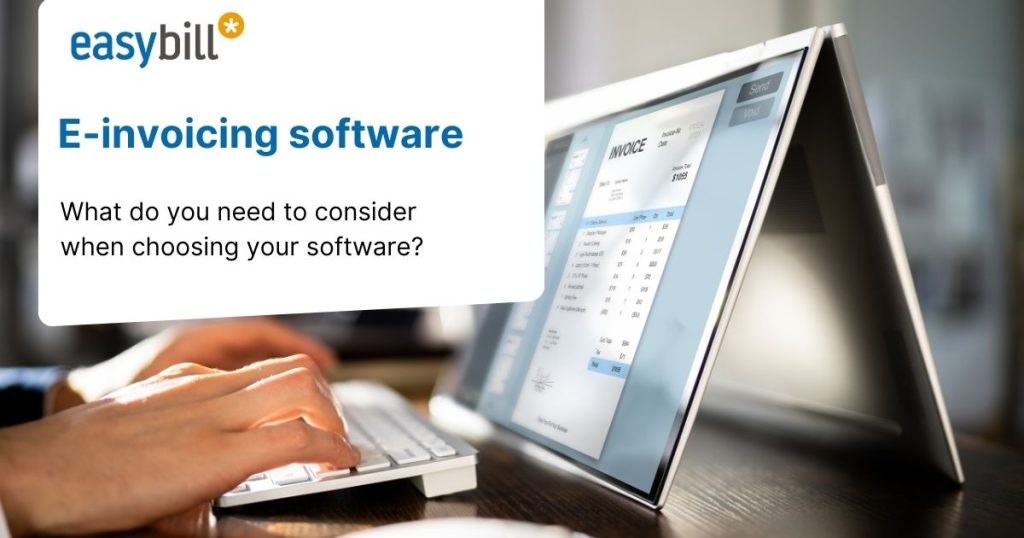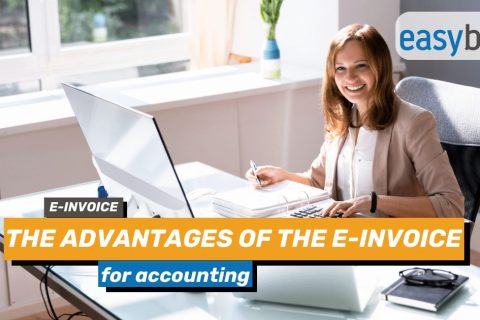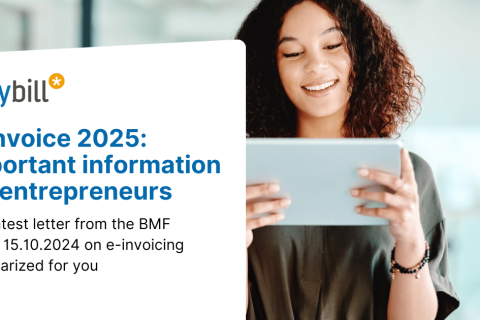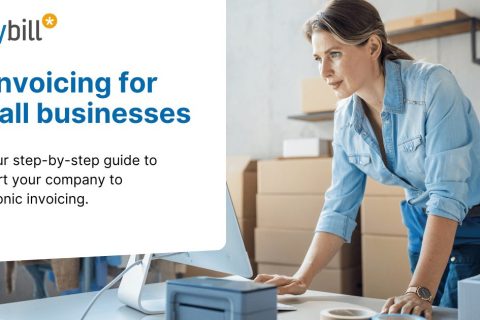
Digital invoicing is on the rise – from January 2025, e-invoicing software will be indispensable for B2B companies in Germany. But what do you need to look out for when choosing a software? A really good tool offers more than just compliance with legal requirements. It helps to optimize your business processes, reduces sources of error and therefore saves valuable time. In this article, we will show you what you should consider when choosing e-invoicing software and what advantages it offers your company.
What is e-invoicing software?
E-invoicing software is a digital solution for companies to create, send, receive and manage electronic invoices. In contrast to conventional paper invoices or PDF files, e-invoicing software works with standardized, machine-readable formats such as ZUGFeRD and XRechnung.
XRechnung only contains the XML data record, while ZUGFeRD combines the structured data record and PDF in one format. These formats meet the legal requirements that apply to electronic invoices and enable seamless communication between the systems of senders and recipients.
What are the advantages of e-invoicing software?
A suitable program for creating e-invoices has numerous advantages. It not only simplifies the switch to e-invoicing, but also helps to reduce administrative work. Below we show you the most important advantages at a glance
- Compliance with legal requirements: Since January 1, 2025, companies and the self-employed must be able to receive and process e-invoices. If the requirements for e-invoices are not implemented on time, there is a risk of fines and tax disadvantages.
- Time savings and automation: An invoice management program automates the entire invoice process – from creation and dispatch to archiving. Manual tasks such as printing, enveloping and sending invoices are no longer necessary. The software also speeds up the processing of incoming invoices.
- Reduction of errors and costs: Automation significantly reduces manual errors, such as incorrect amounts or missing information. At the same time, the costs for paper, printing, postage and archiving are eliminated. The software ensures greater accuracy and transparency in your invoice processes, which leads to fewer queries and friction losses in the long term.
- More sustainable processes: Switching to electronic invoices is an important step towards sustainability. By eliminating paper, printer cartridges and physical archives, you save valuable resources and reduce your ecological footprint. Digital invoices are not only more environmentally friendly, they also save space and are easily accessible at all times.
What functions must e-invoicing software offer?
To make the transition to e-invoicing as easy and smooth as possible, you need well-chosen software. When selecting a solution, you should pay attention to the following criteria in the range of functions:
Processing of e-invoice formats (XRechnung, ZUGFeRD)
The main task of the e-invoice software is to process common e-invoice formats such as XRechnung and ZUGFeRD. The software should support both the creation and receipt of invoices in these formats in order to comply with legal requirements and ensure smooth communication with business partners and authorities.
Visualization of e-invoices
From January 1, 2025, companies are obliged to receive incoming e-invoices and check them for accuracy. It is not enough to simply receive the invoice in the email inbox – a reliable check requires a visualization of the invoice data.
There is no directly displayable version of the XRechnung format, as the format is based exclusively on XML. This means that companies need software that converts the XML data into a readable form.
Caution is also required with ZUGFeRD, which consists of an XML file and a PDF file: The two files are not necessarily identical – it is possible that the attached PDF contains errors. For example, the PDF could display incorrect tax amounts, while the data in the XML file is correct. The important thing is that the XML file is the binding version, not the PDF. It is therefore important that your e-invoicing software has an integrated visualization tool that reliably displays the XML data.
Automated invoice creation and dispatch
Another key feature of good e-invoicing software is the automation of the invoicing process. The software should enable you to create invoices automatically based on predefined templates and master data. All relevant information such as customer data, article items and tax rates are created in advance and can be easily inserted into invoices.
The software ensures that all legally required information is included on every invoice – from the tax number to full payment details. In this way, you avoid legal problems and ensure legally compliant documents.
The invoices can then be sent directly to the recipients – for instance by email. Automation in invoice management minimizes the risk of errors and ensures fast and reliable processing.
Secure and traceable archiving
In order to comply with legal requirements, companies must not only be able to receive electronic invoices, but also digitally archive them. Consequently, it is not enough to simply keep a printout of the e-invoice. The so-called “Principles for the proper management and storage of books, records and documents in electronic form and for data access” (GoBD) apply to the archiving of e-invoices.
The retention period for electronic invoices is 8 years after the end of the calendar year in which the invoice was issued. You can easily store the documents in software designed for this purpose, invoices are not lost and you always have an overview over all documents.
What does e-invoicing software cost?
The cost of e-invoicing software can vary depending on the range of functions and number of customers. Many software solutions offer flexible pricing models based on the individual needs of a company. Small businesses or self-employed people with low invoice volumes can often benefit from free e-invoicing software that covers basic functions such as receiving e-invoices. For larger companies with higher requirements, there are tariffs that offer additional features such as advanced integrations or the processing of recurring documents.
It is therefore worth checking your own requirements carefully and comparing different pricing models. This will help you find the right solution that not only meets your needs, but also takes your budget into account.
Can you create an e-invoice with Word or Excel?
Generally, an invoice must meet certain legal requirements, such as compliance with the GoBD. This means that invoices must be created in an audit-proof manner, i.e. it must not be possible to change them once they have been issued. This is not guaranteed in Office programs, which is why they cannot replace invoicing software.
In addition, e-invoices must be created in a structured, machine-readable format. Word and Excel cannot do this either, as the programs do not support standardized e-invoice formats. Although you can create an invoice in Word or Excel, save it as a PDF and send it by email, this is not an e-invoice in the sense of the legal requirements. This is because a PDF invoice is digital, but still not machine-readable.
Another disadvantage of Word and Excel is the manual effort involved. Each invoice has to be created, checked and sent individually. This takes time and increases the risk of errors. Special software, on the other hand, automates these processes, saves time and ensures greater accuracy.
Why it makes sense for your company to use e-invoicing software
The introduction of e-invoicing software is more than just a response to legal requirements – it is an important step towards digitalization and efficiency. A well-chosen tool not only makes the switch to electronic invoices easy, but also ensures optimized processes in your invoice management in the long term. It reduces manual effort, minimizes errors and speeds up payment processes.
In order for you to benefit from these advantages, it is advisable to implement a suitable solution and adapt existing processes at an early stage. This not only puts you on the safe side legally, but also strengthens your company’s competitiveness.
More articles on this topic:
6 common mistakes when creating e-invoices
The introduction of mandatory e-invoicing from 2025 – What does this mean for companies?
Your optimal preparation and support thanks to the easybill eBook e-invoice




